Introduction
Email marketing campaigns require a higher level of execution than a one-off email blast.
Multiple moving pieces must work together, or you risk throwing everything off.
In this guide, we’ll walk through launching your next email marketing campaign from start to finish.
What Is an Email Marketing Campaign?
An email marketing campaign is a series of emails all working together to meet a specific goal.
The emails within the campaign need to be coordinated to move your subscriber from one action to the next.
The complexity of your email marketing campaign will depend on your end goal, campaign type, and the capabilities of your email service provider.
The best part? You can so do automatically in several cases. But you can also have manual conversations to close more deals and offer a personalized touch when you deem it relevant.
How To Create an Email Marketing Campaign
Email marketing has a higher ROI than other types of paid marketing like PPC ads. So if you aren’t taking advantage of it, you are missing a major opportunity.
But successful email marketing campaigns are complex. Numerous emails are working together to accomplish a goal, and one misstep can throw off the results.
Let’s look at how you can create a cohesive email campaign that doesn’t miss the mark.
1. Give them a reason to want to opt-in.
To start email marketing, you have to have someone to send emails to. Due to laws and regulations in place for most countries, you can’t send emails to people who haven’t opted in.
The problem with that is, most people aren’t willing to give out their email address just because you ask for it. You likely know this, so you create an opt-in incentive.
But what works for some won’t work for all.
You need to create the best opt-in for your audience. Ecommerce tends to get good results from limited-time offers or discounts, whereas tech and services do better with short trials or free training.
2. Establish a campaign goal.
Before you write any copy or create any designs, you need to know the goal of your email marketing campaign.
Are you trying to move a prospect to a paying customer? Or re-engage an existing customer that hasn’t bought in a while? There are tons of goals ranging from broad to hyper-specific.
The more specific you make your goal, the better you can optimize each piece of your campaign.
For instance, let’s say you have a product bundle that you want to discontinue, but you need to move some of the inventory first, so you don’t take a loss. You can create a campaign that strictly focuses on bundle sales.
If you don’t know where you are trying to get your reader to go, you won’t give them the right directions. Always begin with the end goal so you know what metrics you will measure to determine your success.
3. Learn the ins and outs of your buyer personas.

Once you know your goal, you need to consider your audience. This is especially valuable if you have more than one persona you will send a campaign to.
You need to think about why the customer should want to take your requested action. What will they get from it, and why is now the best time?
Not every campaign should be sent to all of your personas. The CTA must be relevant to each person. Otherwise, it’s a waste of your resources and their time.
If you want to send a campaign to your entire list, consider creating multiple variations so that you can perfectly target them to the reader.
4. Segment your list with specific criteria.
As noted in the above section, you may be marketing to more than one persona. If you want to make it easier to create campaigns that speak to each customer group, you can segment them based on specific criteria and use those segments ongoing.
You can also create additional segments as new trends or goals develop.
By creating segments, you can quickly adjust your email campaigns based on what each segment has historically responded best to.
This process will take some testing and tweaking, but once you have segments you know well, your campaigns will perform better.
5. Set your timeline.
There are two ways you can develop a timeline for email campaigns. You can make emails time-triggered or behavior-triggered.
A welcome sequence, for example, often starts as behavior triggered and then moves to time triggered.
You’ll need to decide if your campaign needs to be sent within a specific timeframe or if it would be better driven by individual behavior or some combination of the two.
Before you start drafting, map out each email that you plan to send. Note what the trigger will be and if it needs to end by a specific date before it becomes irrelevant.
Understanding your timeline will help you figure out when you need to add urgency to your campaign.
6. Map out your entire email sequence.
Now that you’ve done the background planning, it’s time to get into your email platform and build your campaign.
You can elect to set up individual emails, but in the long term, the more efficient option is to build out email flows.
If you opt to set up flows, you will start by creating your first email and working your way out by time and or behavior trigger. You can put placeholder emails in place while you develop the framework.
You’ll then want to go back in and add copy that is optimized for your goal and position in your campaign.
7. Compose subject lines that get opens.
Your subject line, from line, and preview text are the only things your subscriber sees to decide if they want to open or not. Therefore, you want to make sure your subject line is doing its job.
When writing your subject line, you need to make sure you don’t include terms that trigger the spam filter. If your email doesn’t go to your customers’ inbox, your campaign isn’t doing any good.
One tried and true way tactic for subject lines is opening a curiosity loop. You want to give enough of a hint that your subscriber understands what your email will contain without giving it away completely.
8. Craft your branding and assets.
There are typically two types of assets you will need for your email – branding assets and images. You’ll want to be careful of adding any attachments because they tend to get an email sent to spam.
Your images might be photos or designed graphics that are specific to the content of your email. You’ll want to choose your images carefully to ensure they support your goal. Don’t add images for the sake of adding images, or it could hurt your campaign.
The other asset in most email campaigns are branding elements, and they can be used throughout your emails. These are elements like your logo or a custom-style footer.
9. Write obvious calls to action.

Most brands toss a “buy now” CTA on a button and think that’s all they need to do, but that will not get you the best results.
Words like “buy” don’t imply any benefit to your customer. Those types of vague calls to action won’t help your campaign hit its goals.
Instead, use value-based calls to action through your email marketing campaigns. So, if you sell skincare, try a “get glowing skin” CTA instead of “shop.”
Also, don’t mix your CTAs within your emails. It gets confusing. You can test various CTAs throughout your campaign, though. Try using them in buttons, on images, and as links.
10. Include an option to opt out.
Having a link to opt-out isn’t an option. Anyone who is using email marketing has to provide a clear way for their subscribers to opt-out.
But you can frame your opt-out link with your brand value to remind customers why they are on your list in the first place.
By adding a value statement right above your opt-out link, you may deter some subscribers from leaving your list just because they didn’t want the current email. You want your statement to remind them of your shared values, boosting their feeling of being part of a community.
The other way to limit opt-outs is to allow subscribers to remove themselves from specific sequences while staying on the overall list. For instance, if you run a weekly newsletter, let your subscribers to opt-out of it but still receive special offers.
11. Finalize your email marketing design.
All the copy and assets are ready, and it’s time to start finalizing your design.
If you don’t have a designer or coder to create custom emails for you, you can choose to use one of the many templates available.
Most email services categorize their templates by use (i.e., welcome, cart abandonment, etc.), so you can choose one in line with your goal. The templates are often drag-and-drop, meaning if there is a section that you want to delete or add to better fit your needs, you can easily do that.
12. Utilize technology.
Email marketing has several benefits, but one of the biggest ones is how much of your marketing can be automated to run on its own once you’ve optimized it.
When you choose an email provider, make sure you choose one that offers you robust automation features. Even if you don’t use them now, you will likely want them as your email marketing grows.
Another way you can use technology is to test your emails before sending them. You can use a service like Litmus to test send emails to make sure they will display correctly across different email services. Be aware that email testing services are costly, so at the beginning, you may opt to manually send test emails to just a couple of the largest email service providers.
13. Know your metrics.
Once you’ve hit send, you’ll want to begin monitoring your metrics.
Open and click-through rates are the most commonly tracked email marketing metrics, but the metrics you’ll want to watch will depend on your goals. If you’re running a sales campaign, you’ll want to pay attention to the conversion rate and revenue by email, for instance.
With email marketing, it’s easy to A/B test your elements so you can continue to improve each email over time until you are satisfied with your results.
Types of Marketing Campaigns
1. Welcome Email Sequence
Your welcome email sequence is exactly what it sounds like. It welcomes your subscribers to your email list.
When someone signs up to your list, they will be sent a drip campaign – an automated email campaign that is sent out based on time or behavior triggers – that should help guide them to the next action you want them to take.
The first email in the campaign should also fulfill any promises you made to get them to sign up, like delivering an asset or training. After that, the next emails will depend entirely on your goals.
You could use additional welcome sequence emails to drive subscribers to your content or your social channels.
Some brands incorporate a self-segmenter email in their welcome email campaign so they can send them more relevant content moving forward. A self-segmenter email tags the subscriber in your email system based on the link they click from a list of options.
For example, if your audience includes parents of all ages, you could ask them to choose an age range of their children so you can prevent sending them content or offers that don’t apply to them.
Remember, your welcome campaign will set the tone for your email marketing. You want it to stay on goal and on-brand.
2. Promotional Campaign
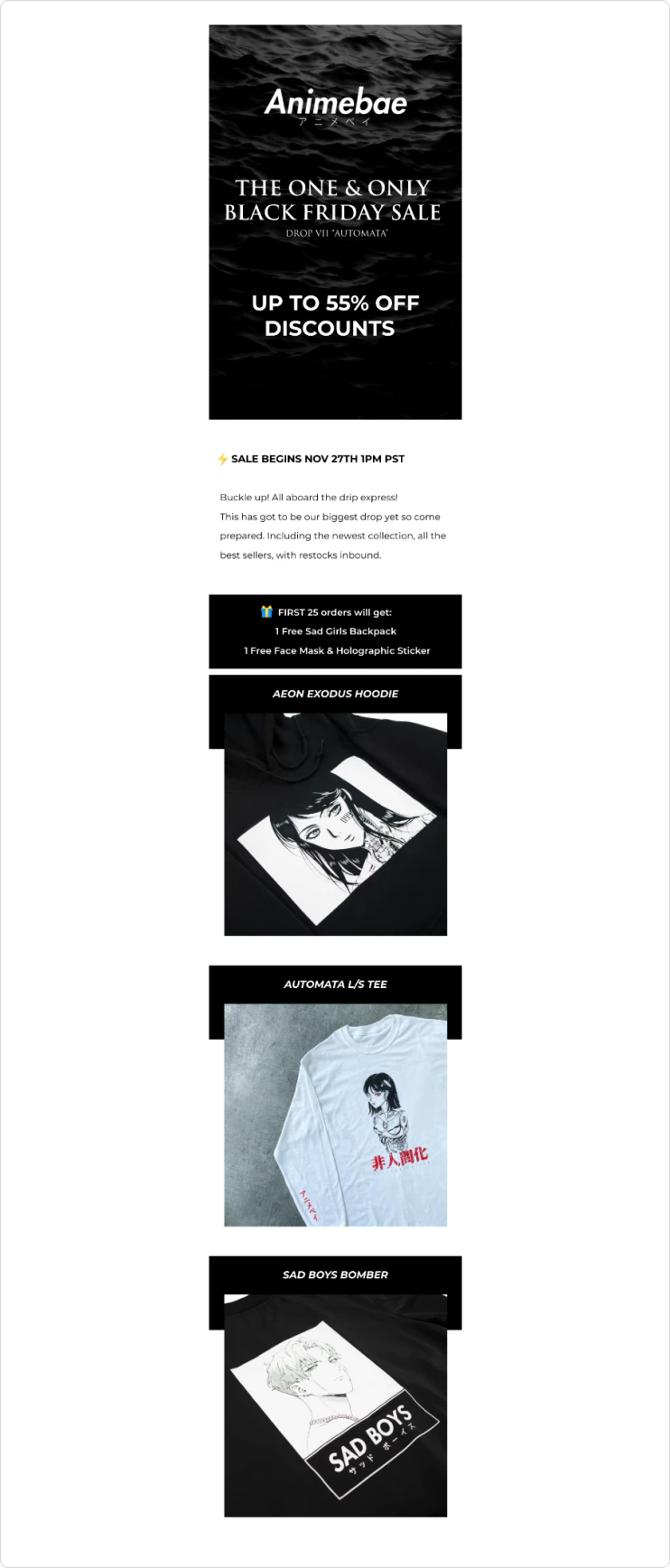
If you check your email right now, you’ll find primarily promotional campaigns.
Promotional emails are used by virtually every major retailer and ecommerce store. Typically, the promotional campaign is developed to inform their customers of a limited-time offer or sale.
Because promotional campaigns are so common, it is harder to stand out from the noise.
To get your promotional emails better results, you’ll need to:
- Optimize your subject lines to stay out of the spam folder.
- Mix in other campaigns that foster engagement outside of your promotions.
- Make your promotions limited and irresistible.
If you send out daily promotional campaigns with subject lines like “15% off all products” every day, there’s a good chance your subscribers are going to ignore most of your emails. Set up your promotional campaigns to be better than the tens of others your customer receives that week.
3. Seasonal Campaign
Seasonal campaigns are often built around holidays, but you can also use them if you sell seasonal products based on weather patterns.
You will need to consider which seasonal events are relevant to your audience and how many of those events you’ll want to participate in.
Then, you’ll need to decide how long your campaign will run and what your offer, if any, will be.
Seasonal email campaigns – especially campaigns around the holidays – are now being promoted early, so don’t come late to the party. Start teasing your upcoming campaigns in advance.
4. Behavior-Triggered Sequence
Many email campaigns have behavior-triggered elements, but we’re talking about campaigns that are solely driven by actions taken (or not taken) from beginning to end.
For instance, if a subscriber signs up on a landing page for an information product funnel. The sign-up might trigger an email to a webinar, which if they attend may trigger a sales email sequence, whereas a follow-up email might be sent if they do not attend.
Behavior-triggered sequences tend to have better engagement rates throughout because they are more personalized than time-triggered campaigns.
5. Post-Purchase Sequence
Post-purchase email campaigns are excellent for ensuring customer satisfaction and building confidence in your brand.
The time between ordering a product and receiving it can be a period of doubt. You can help erase doubts with a stellar post-purchase sequence that gets your customer excited about your product.
When you order a product, you’re used to getting an order and shipping confirmation, but what if you also received a product guide, customer stories, and information on other products that compliment your product while you wait? Brands that put in the extra effort to create anticipation for their customers set themselves apart in the market.
6. Social Connect Campaign
Email campaigns aren’t created in a bubble and should introduce your other marketing efforts.
Driving traffic to your social channels from your email introduces an additional touchpoint between you and the customer.
You want your email marketing to make your subscribers feel exclusive, but your social media gives a sense of community. Connecting on multiple channels allows you to meet more of your customers’ needs.
But don’t send one email with all of your social handles. Instead, you need to strategically drip out your social campaign with your most popular accounts. So, if you focus on Instagram, have your first email in the campaign direct your customers there.
7. Newsletter Campaign
Newsletters are a popular way to connect with your subscribers when you aren’t running promotions or specific behavior-triggered emails.
Newsletters aren’t generally thought of as a “campaign,” but they are ongoing and should be styled similarly each time, so your subscriber knows what to expect.
While newsletters tend to be content-based, you don’t have to create all of the content you include. You can curate content from other sources to pair with yours to create a well-rounded newsletter.
What newsletter campaigns shouldn’t be is sales-focused. Let your newsletter build a relationship with your subscriber and save the sales for other campaign types.
8. Trial or Demo Sequence
If you run a business that runs on a subscription model or isn’t straightforward to use, you might entice users through a demo or discounted trial period.
This campaign may replace your welcome email campaign if the customer isn’t a current subscriber. Don’t forget to oppress the welcome campaign so that the customer doesn’t become bombarded immediately upon signing up.
Your trial or demo campaign should start with product delivery. Even if your subscriber immediately gained access, go ahead and guide them back to it again.
The rest of the campaign will perform best if it’s guided by the actions your subscriber takes. You want the emails toward the beginning of the campaign to help provide product support, such as explaining what your features can help your customers achieve.
The end of the campaign is where you will transition to getting the conversion (or continued commitment).
9. Browse Abandonment Campaign

A browse abandonment campaign is sent out when a subscriber has browsed your site or a specific item but didn’t purchase.
You want your browse abandonment campaign to be delivered promptly. Try sending your first email within a couple of hours of abandonment and wrap your sequence within 48 hours.
With browse abandonment campaigns, you don’t want to become too pushy. Send 2-3 emails that gently remind your subscriber of your site and be helpful.
After all, you don’t know what caused them to stop browsing. They may not have wanted the product, and you trying to force a sale can potentially cause you to lose a customer.
10. Cart Abandonment Campaign
Cart abandonment campaigns are more popular than browse abandonment campaigns but generally serve the same purpose.
The difference is, adding an item to a cart shows the customer had the intention to buy. So, you know they did like the product but maybe got distracted or needed more information before purchasing.
Knowing this, you might want to add an incentive to your cart abandonment sequence. A percentage or dollar-off discount is a popular choice, but free shipping for product-based brands also does well.
You will still want to send out your cart abandonment campaign quickly after abandonment and add urgency because the items won’t stay saved in the cart forever.
11. Re-Engagement Sequence
What do you do when a subscriber goes cold? You send them a re-engagement campaign and hope to get them active again.
For your re-engagement campaign, focus on writing subject lines that get your subscriber to open. Sometimes the best choice is to be blunt and let them know you realized they hadn’t engaged anymore and that you will be parting ways if they don’t take some action.
It’s up to you if opening the email is enough or if they need to take a larger action.
If your re-engagement campaign doesn’t work, you will want to remove them from your subscriber list, or they will drag down your metrics and, eventually, your deliverability.
Our Email Marketing Campaign Examples
1. Cocosolis
Our email campaign from Cocosolis focuses on demonstrating the benefits of their body butter throughout. You can see that the design and copy work in unison to show the product’s luxuriousness. The entire campaign builds on the experience of the product, building desire in the customer.
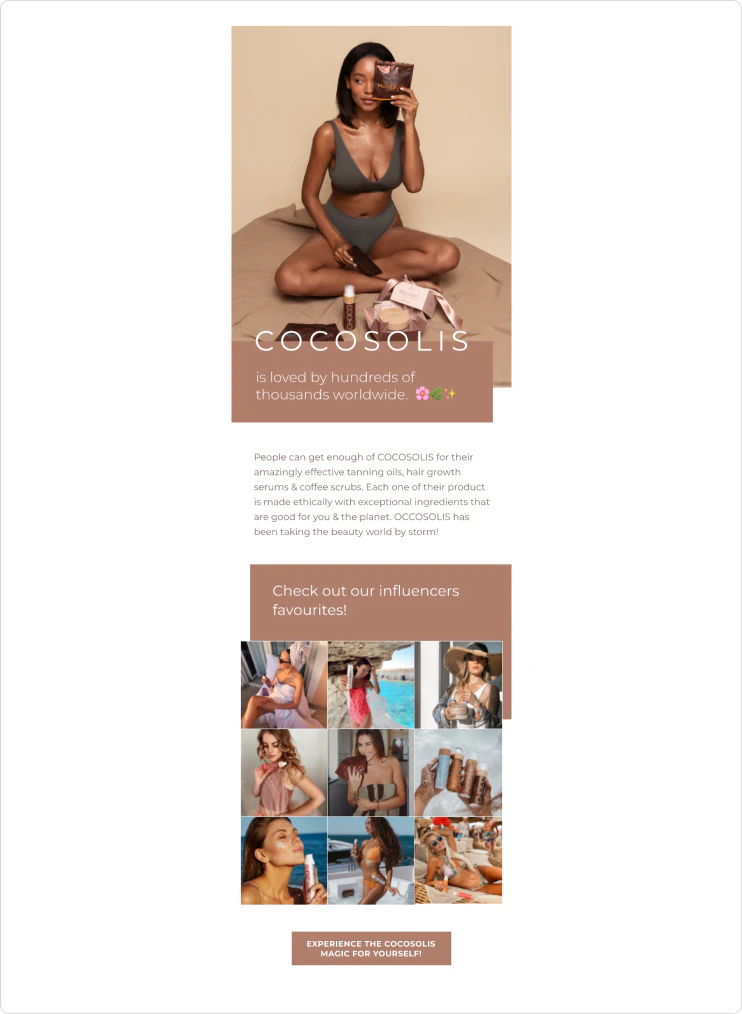
2. Kanso Designs
This email from Kanso Designs is an announcement of product restock with an emphasis on brand messaging. One of the things that makes Kanso Designs special is the commitment to the environment. Reminding the customer of that commitment throughout the campaign helps foster a sense of connection for a shared goal.
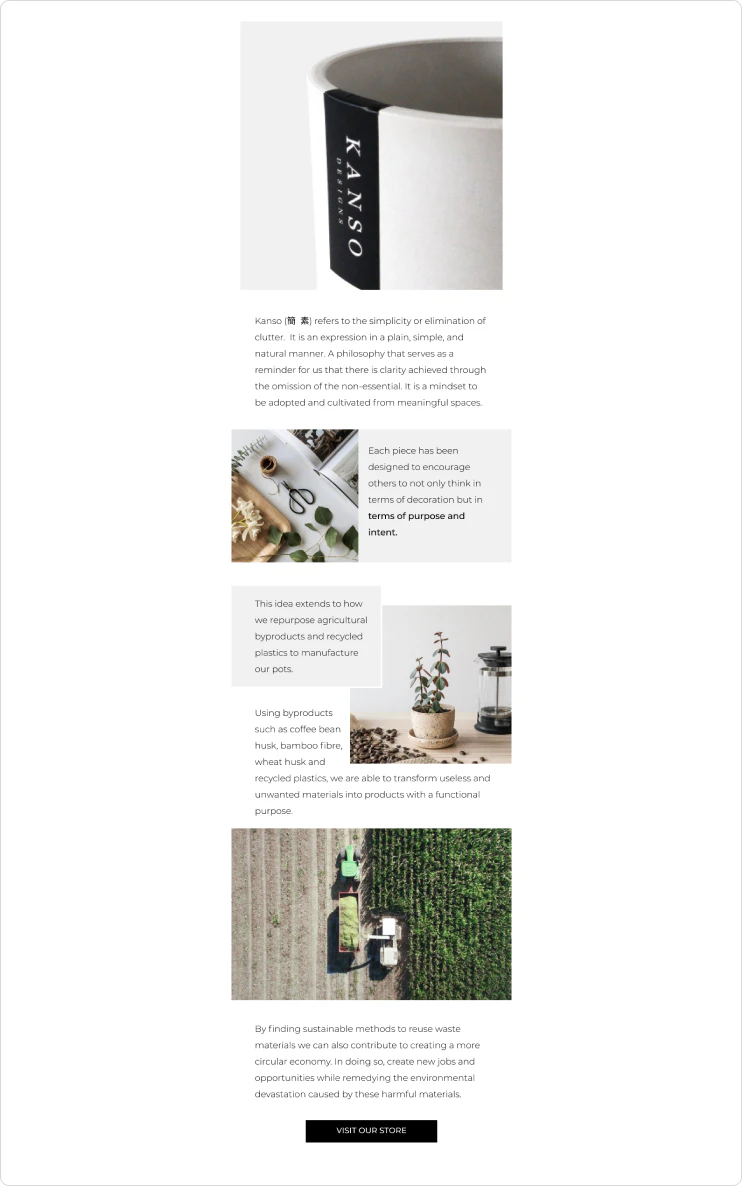
3. Animebae
Our email campaign from Animebae does something unique in that it tells a story while simultaneously highlighting products. People connect to stories, and because Animebae’s subscribers are built around a community of sorts, we use storytelling in the email campaign to bring the products to life.

4. truMedic
This email campaign from truMedic is sales-focused and we honed in on pricing and urgency to motivate the subscriber to take action. The email campaign goes on to demonstrate the benefits of the product directly in the email, which many brands often neglect but is necessary to give the reader a reason to purchase.

Optimizing Your Email Marketing Campaign’s Performance
Ultimately, you need to get your email campaign launched so you can start learning what is and is not working with your customers.
Once you have some email marketing metrics to learn from, you can start to optimize.
For example, if your abandoned cart email campaign isn’t getting opened, you will want to work on A/B testing your delivery timeline and subject lines.
But if your emails are getting opened but still not converting to additional purchases, you know you have to increase the content of the emails in that campaign.
If you are looking for help with your email marketing campaigns and want an agency with email expertise, sign up to receive your custom email marketing plan. We have partnered with several brands to grow their email marketing and bring that knowledge to every strategy we develop.
Final Thoughts
Email marketing campaigns come in all shapes and sizes. The right choice for your next campaign depends on a lot of factors.
One thing that all high-performing email campaigns have in common, though, is that they start with a firm plan in place.














.webp)

.webp)







.webp)










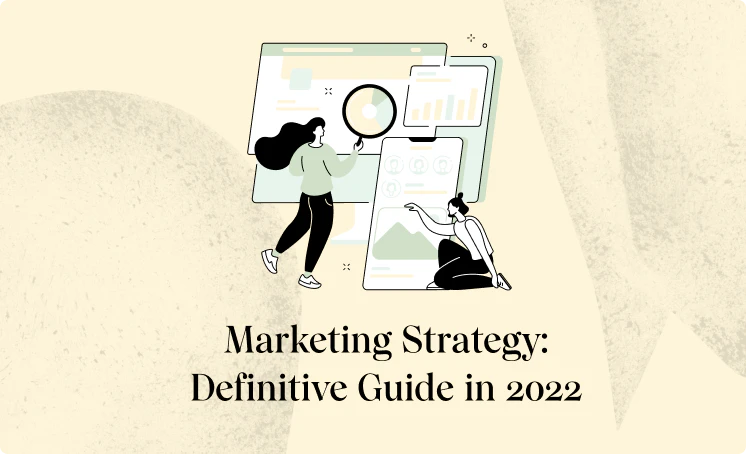

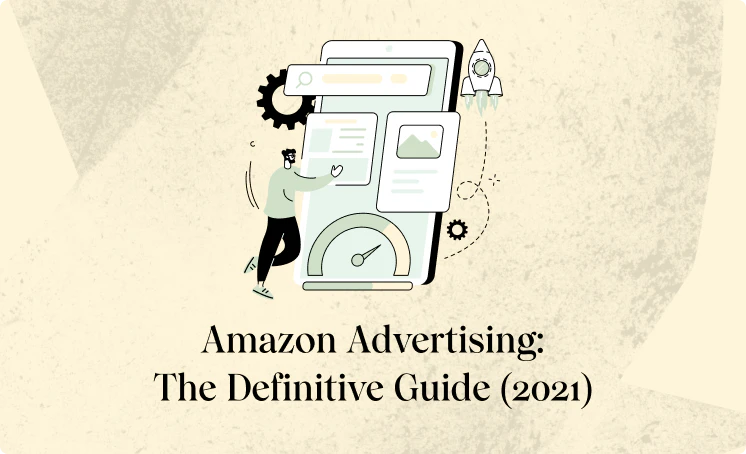





























.webp)






